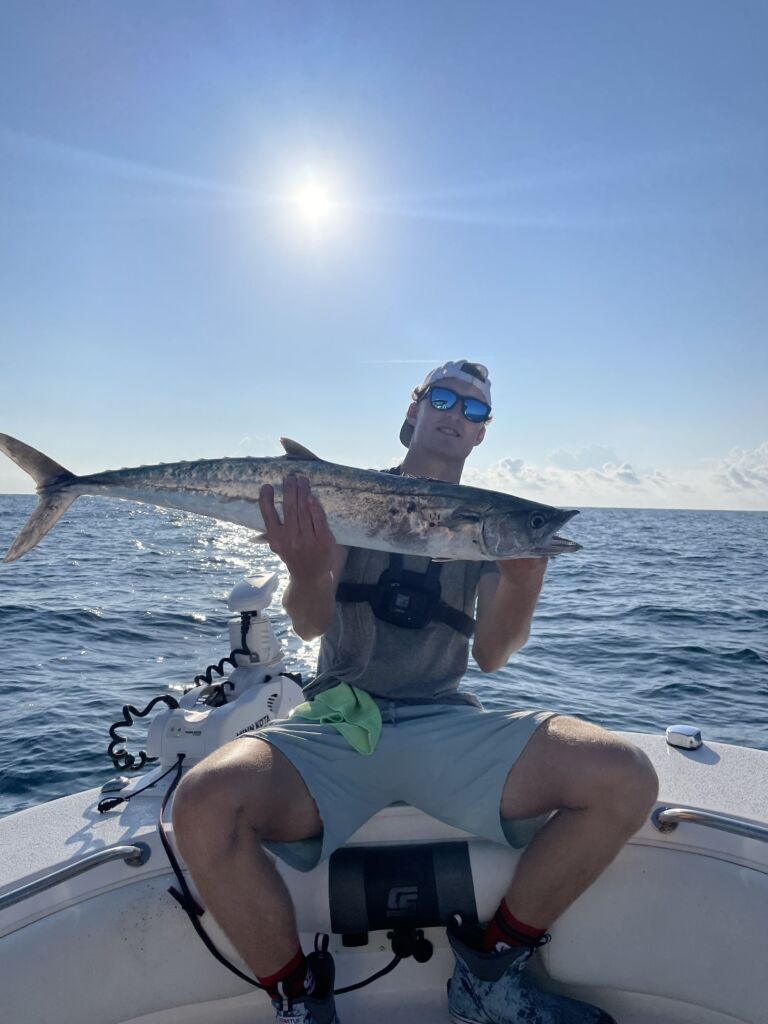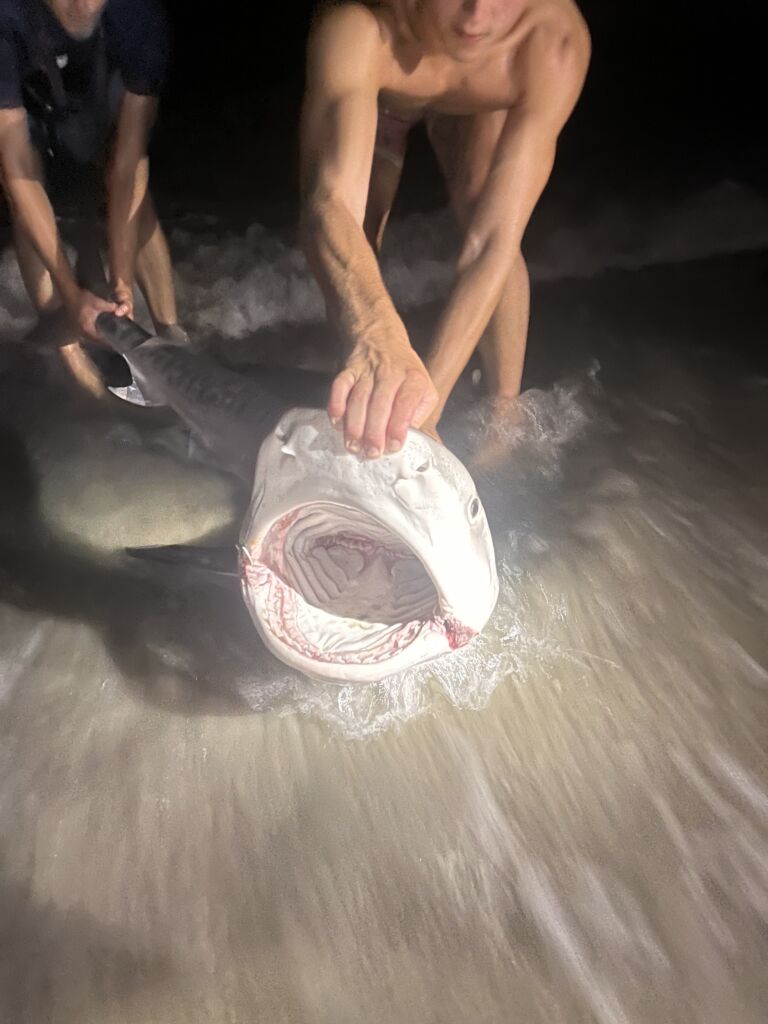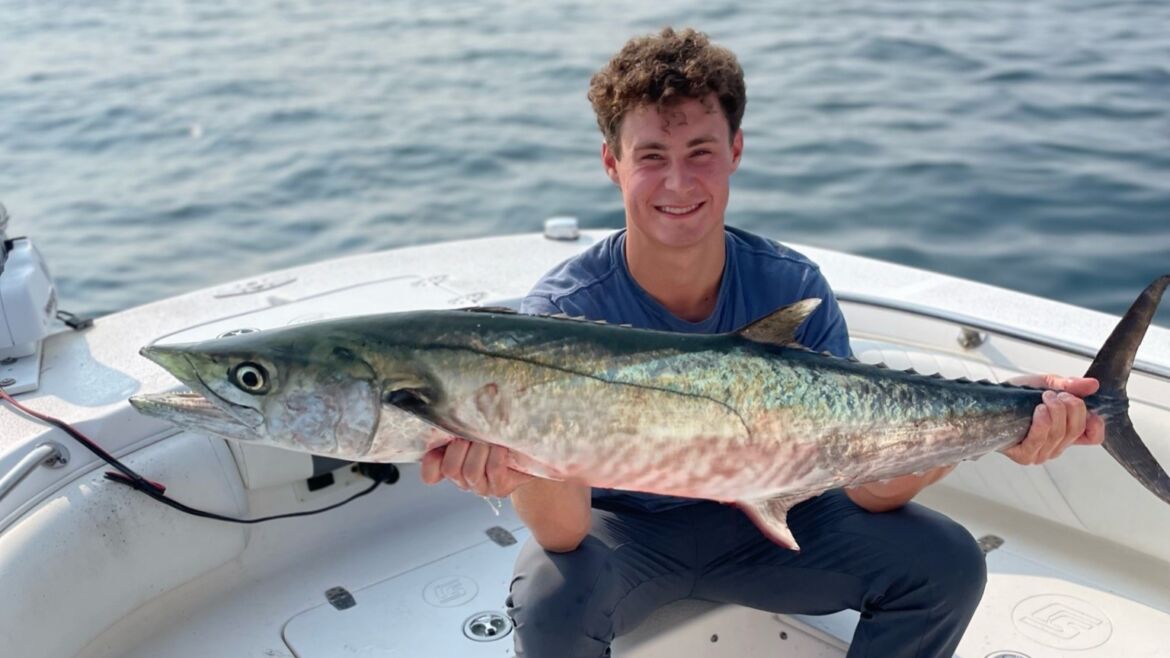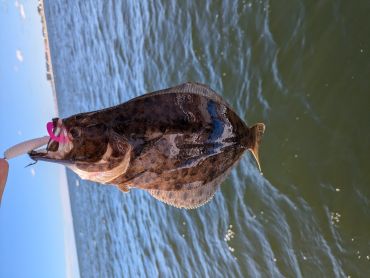If you have fished for a long enough time, you have run into situations where it seems like you are hopelessly outgunned against a fish you were targeting and/or expecting. Often, upon hearing that drag scream, we panic, tighten the drag, pull the hook, break off the fish, or do something else that we quickly regret shortly after. If you have ever done this, you are not alone. I can’t even tell you how often this has happened to me.
Then, to make matters even worse, all you can think about after is what you did wrong and how big that fish could’ve been. I don’t know; maybe you’re not like me, but I will sit and sulk when something like this happens because I’m so angry at myself.
As a result, I wanted to write this article for you guys so that, hopefully, one of your readers can potentially land one legendary fish and not panic like all of the other times before.
However, before we even get into the article, some of you readers may be wondering how you can encounter these once-in-a-lifetime fish and get outgunned in the first place. My response to this: I would recommend downloading the Fishbox App.
Get your personalized fishing map
Answer a quick quiz and get your own personalized fishing map
Chock full of helpful fishing advice like knot-tying lessons, expert insights, weather data, and more, the Fishbox App will better prepare you for the bite and give you a better idea of what you can expect when you’re on the water. So don’t wait; download the Fishing App today.
Enough yapping from me; let’s get into this thing!
How Did We Get Here
So, if your experiences are anything like mine, you probably didn’t think you were going to end up in a situation where you were outgunned. Chances are you were either fishing for another species or just caught totally off guard.
I will say that this generally happens when I am fishing saltwater simply because there are more species than freshwater, and saltwater fish often get bigger as well. There have been a few instances where I’ve been outgunned in freshwater, which I will talk about later, but most of these happen when fishing saltwater.
Just think about it: if you’re fishing freshwater, you’re likely fishing for bass. Unless you’re fishing somewhere with monster bass, you generally don’t have to worry about hooking something bigger than you can handle.
Read also: Pennsylvania Fishing Seasons: Your Comprehensive Guide
To a certain extent, you should plan on being able to catch big fish and have your gear match that, but there will be times when you can’t predict what’s going to be on the other side of your line.
All this being said, you can’t really expect or predict when this is going to happen—but rest assured that it will happen, and it will depend on what you do in the first 5 seconds of the fight that will determine whether or not you have a chance of landing that trophy fish.
What To Do When You’re Outgunned
As I just mentioned, it’s not a matter of whether you’ll hook a fish you’re not ready for; it’s simply a matter of when. First, before we even get into the meat of this section, I want to break this section into two different parts: fishing from a boat and fishing from the bank or shore.
- Boat Fishing: In terms of overall difficulty, being outmatched in a boat is slightly easier than being outmatched on the land. On land, for example, if the fish decides to run, you can’t normally swim out to keep up with the fish. You have to hope he stops his run before you get spooled. However, if you’re on a boat, you can actually chase the fish down if you react quickly enough.
Okay, let’s play this scenario out so I can share my advice with you guys. If you’re fishing inshore/backwater, chances are you’re anchored or sitting still, so you shouldn’t really plan on chasing down the fish. Instead, you want to use a technique I call the “pinch and pull.” Now, yes, drag is a very useful tool and should be utilized, but when you hook a big enough fish, you often want to use more than just drag to turn the fish’s head.
What I like to do is tighten the drag a little bit more than when I hook the fish if he is ripping the drag. The reason why I don’t like to tighten the drag even more is because you know the limits of your reel and line better than your drag does. That way, you don’t unnecessarily tighten the drag too much and then get broken off.

Essentially, the pinch and pull technique involves being gentle with the rod but pinching or holding the spool to add more drag effectively. Now, don’t grab the reel as hard as you can because it will either hurt your hand or break the fish off immediately. Instead, lightly grab the reel and pinch it a bit to slow the fish down while gently pulling the rod tip up and trying to turn the head of the fish.
From my experience, the fish only get angrier and tend to run even harder when you try to horse the fish. You want to coax the fish to come back toward you willingly. If you’re already outgunned and you make that fish angrier, your chance of landing it decreases immediately.
Unfortunately, I can’t give you a set recipe for how much pressure you should apply because it depends on the strength of your line and how much pressure you actually want to put on the fish. Like I always say, this takes time and experience on the water. You will lose fish; it’s just going to happen. You’re going to pinch the spool too hard or tighten the drag too quickly. Learn from your mistakes and move on.
Now, let’s talk about when we’re fishing offshore. For the most part, you would or at least should always have your motor running or idling while fishing offshore. This helps for two reasons. First, you don’t have to worry about whether or not your motor will start back 30 miles offshore.
Read also: Your Complete Guide to Fishing in Tasmania, Australia
Second, all you have to do if you hook a monster is put the boat in gear and go. Let’s play it out again: you’re trolling, and you hook an absolute giant, and he is smoking your reel. Immediately, take the boat out of gear to slow the rate at which the fish is spooling you. Don’t tighten your drag too much, and turn the boat in the direction of the fish.
Get to the bow/front of the boat and begin slowly driving at the fish so you don’t have too much slack in your line. Do this until you get on top of the fish and get up and down with him. Now, you’re just going to be locked in a long battle where you have to gain inches at a time. Utilize that pinch-and-pull method again, and just be ready for the long haul.
Trophy fish are going to take longer to get in, especially when you’re outmatched. Don’t get impatient, tighten the drag, or put unnecessary pressure on the fish, or you will inevitably lose the fish.
- Bank Fishing: Being outmatched from the bank can be slightly more difficult than being outmatched from a boat. The primary reason why this is the case is because you cannot chase the fish if he decides to run out. Again, in these situations, we’re going to want to utilize the pinch-and-pull method.
If the fish decides to run left and right along the shore or bank, you need to try moving with it to save the line. If it runs out, there’s not much you can do other than tighten your drag and use the pinch-and-pull method. Unless you want to swim out, there’s a low chance of landing that fish. However, you can try and get out as far as you’re comfortable with.
I’ve been wasted deep in the ocean before trying to stop a run. I can’t emphasize this any more than I already have, but you have to try to be gentle when turning the head of the fish. If you try and yank that fish, you’re going to pull the hook, break the line, or tick off the fish even more, and then you’re really cooked.
When Do You Know to Apply More Pressure
There are definitely going to be times when you’re locked into a tough battle with a big fish, and it’s just taking forever, and you might want or need to apply more pressure because of a time crunch or some other factor. My general rule of thumb is never ever applying more pressure if you’re gaining line. I don’t care if you are gaining a few inches every minute—if you’re gaining, I really wouldn’t recommend upping your drag or pinching the spool.
However, if you are deadlocked with the fish and not gaining any ground, I would start to up the pressure, whether that be by drag, pinching the spool, or even both. Just remember, increasing pressure increases the chance of breaking the fish off or pulling the hook. That is simply a risk that you have to take. So, at this point, it’s just a judgment call on how much time you want to spend fighting the fish or whatever.
There is one little point I want to harp on before I move on—whether or not you have a “good” fish on. Especially when saltwater fishing with live bait, sharks can be a real problem, and sometimes it’s hard to tell if you’re locked into a battle with a shark or a surprise trophy fish. This being said, let’s use logic to give us a better guess if it’s worth continuing to fight this fish.
First off, sharks have teeth, so if you’ve been fighting a big fish on monofilament or fluorocarbon leader for a while, the chances are it’s not a shark because he probably would’ve cut you off on his teeth or skin by then. Now, there is a chance you perfectly hooked the shark, but chances are if you aren’t fishing with wire and the fish is still on after a while, it might not be a shark.

Second, consider the bait you were using and consider whether a shark would eat it.
Third and maybe the most telling thing is whether there are monster head shakes when you are fighting the fish. Does the rod pulse and bend sometimes and, for a split second, feel like the fish isn’t there? Sharks are notorious for their headshakes, so if you feel like there are headshakes, it could be a shark.
Before I continue into the next section, I just want to say that these are a few signs you could be wasting your time hooked up to a giant shark. This is not a guarantee at all. I also am not at all trying to discredit fighting big sharks. If you want to, that’s totally up to you. I want you all to be wary of the time you could spend fighting this fish.
Why Do Some People Choose to Be Outmatched
Now, some don’t choose to get in fights with big fish completely outmatched, but there are those that fish with lighter or lighter gear to make the fight more fun, and I want to say a few words about this.
I have absolutely no problem with fishing light gear, but you need to be wary of the health of the fish, especially if you plan on releasing them. Some fish fight very hard, and if you’re fighting them for a long time, there is a high chance you won’t be able to release them because they will simply be too tired to live.
So, by all means, fish light gear and have fun, but be careful of what fish you are targeting and be mindful of whether or not you’re releasing the fish to protect fish stocks. We are called to take care of God’s creation, so let’s do that.
What Not to Do
I know I have already given you guys a bunch of advice on what to do when a fish bigger than your gear should handle hits the line, but I also want to share a few things that I would not do, given my mistakes and past experiences.
First and foremost, do not tighten the drag bunch if the fish starts ripping a ton of line off of your reel. If your reel is spooled correctly, then you should have at least a few seconds to make a decisive move, even if the line is peeling off your reel at a crazy rate. Tightening your drag too quickly and too much is the quickest way to lose the fish of a lifetime, so just be careful. Ease into the drag and see what the fish is going to do.
Read also: How to Fish for Trout in a River: Proven Tips and Techniques
If you’re on a boat, then try to turn the boat on the fish and start going towards it.
Another super common mistake that people, including myself, commonly make is that they aren’t in a position ready to react. You have to be expecting bites as a confident fisherman. You have to be ready for the unexpected and be ready to jump into action.
If you’re trolling and you get smoked, you better take that boat out of gear immediately. Just think about it: if the fish bites your bait and starts going the opposite way of the boat, there is going to be no line on your reel in a very short amount of time. So, pay attention and don’t get lazy.
Story Time
Before I end the article, I want to share a few stories with you all so you can better understand how these things typically play out.
Sad ending: I’ll start with the sad ending first. I remember a few years ago, I was trolling for Spanish mackerel off Ocean Isle Beach, NC, maybe a mile off the beach. I was using a new kind of duster rig, and while trolling with a very light rod and a 3000 reel with a 20-pound braid, that thing got absolutely hammered. To this day, I still don’t know exactly what it was, but I imagine it was a large Spanish or even a king. The fish hit and did not stop. I didn’t even think about telling my grandfather to slow down the boat because I panicked so quickly. After about three seconds of that fish ripping, I winched down the drag and broke off on a monster. I was heartbroken, but I learned an important lesson. Save tightening the drag hard as your last resort. I probably could’ve had a good chance at eventually landing that fish or at least seeing it, given I had stopped the boat and put it in reverse.
Happy ending: Now, to finish with a happy ending. Last year, I went shark fishing on Ocean Isle one night. I had put a little chunk of stingray on my 9-foot Ugly Stick with a 7500 Penn Spinfisher. I love this combo because sharks 5 feet and under put up a great fight on the rod and were super fun to battle. Anyway, you can probably see where this was going. I only had the rod cast out maybe 40-50 yards when the bait got hammered. At first, I thought it was the usual 5-foot blacktip or bull, but that initial run just didn’t stop. It kept going until I maybe had 25 yards of line left on my reel. Instead of locking down the drag and risking the monster shark, I began to walk out into the water and use the pinch-and-pull method. Every time I would gain back 100 yards of line, the fish would pull it right back out. This fight lasted almost an hour, but we finally got the shark in.

Turns out it was a 9-foot tiger shark caught in probably 5 feet of water or less. To this day, that is one of my favorite fish and fights of all time. Not only was it a big fish, but we really shouldn’t have been able to stop that shark. That shark is living proof that the pinch-and-pull method is highly effective.
Before I end the article, I want to emphasize the importance of patience. If you hook a giant, it’s going to take some time to bring in. So, get ready for the long haul, and don’t jump the gun by making a rash, dumb decision.
Conclusion
I hope you guys have enjoyed reading this article as much as I did get to write it. There is something truly so special about landing a fish when the odds are against you, and ultimately, those fish, regardless of how big they are, will be the ones you remember.
Get your personalized fishing map
Answer a quick quiz and get your own personalized fishing map
I have been blessed to have landed a handful of these caliber fish before, and I’m sure I will land more in the future. However, I also know that I will lose some. I can’t expect to win every fight, but hopefully, this article prepares you better for fighting fish when you’re a little overwhelmed.
Thanks again for reading the article, and, as always, good luck and tight lines!
Photo Source: All photos in this article were provided by expert Pierce Latta.
Visit his Instagram profile.
Subscribe to his YouTube channel.

